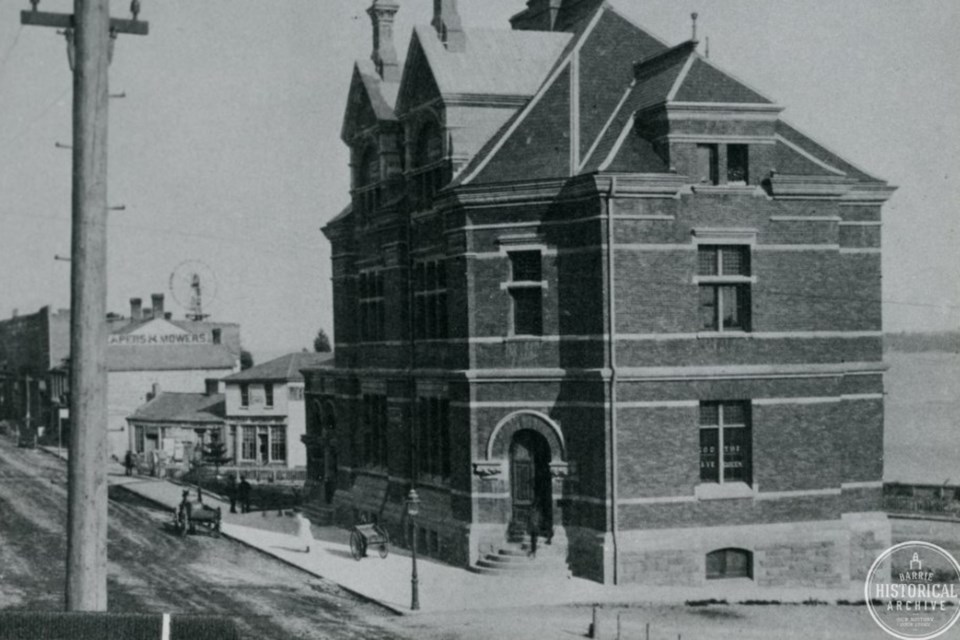The story of the Christmas box is a complicated one. Tied up in the history of Boxing Day, it could be considered part gift, part yearly bonus and part gratuity.
Despite the name, the Christmas box practice of Victorian Barrie did not normally include a box at all. The tradition had been in place in Europe for many years before this time, and the name may have come from a small box once used to gather monetary donations.
In Britain, the place of origin for much of old Barrie’s holiday traditions, the Christmas box was closely connected to the rewarding of servants and others who had made themselves useful to the wealthier upper class during the year.
In Victorian Barrie, working class people, apprentices, postal workers, clerks and delivery people all looked forward this token of appreciation. A Christmas box could involve any kind of small gift at all but, in most cases, cash was the expected form. Alcohol too was often given as a Christmas bonus of sorts.
Regular customers of a particular business might also expect a Christmas box of some kind to keep them coming back in the new year.
The term Christmas box also referred to small presents given to friends or neighbours. This was normally of lesser value and extravagance than the kind of things normally given to close family members. Today, we might give sweet treats, or perhaps a Tim Hortons gift card, in the same way.
In 1880, ever-evolving photographic technology produced cabinet cards and ornate card-framed photos which were ideal for this sort of gift giving, as W.C. Reeves of Barrie advertised in the Northern Advance.
“During the Christmas and New Year holidays the best present to give to a friend as a Christmas box or as a New Year’s gift is a first-class photograph of yourself taken in the new style at Reeves’ first prize photo studio.”
By 1901, the assorted chocolate box, developed by English chocolatier John Cadbury in the 1860s, was becoming an increasingly popular item for casual gift giving. Mr. Leonard’s bakery and grocery shop at 39 Dunlop St. offered these for sale at Christmas of that year.
“Our fancy Christmas boxes, filled with choice chocolates and bon bons, make a suitable present to a friend.”
George Weston, whose name still figures prominently in Canadian grocery circles, was a Toronto-based bread baker who got into the fancy biscuit business in the early 1900s. Like Mr. Cadbury, Weston saw a niche in the market and created curated tins of assorted biscuits.
In December 1923, a half-page ad in the Barrie Examiner described a luxurious collection of English-style biscuits, all contained within a round tin with an English town Christmas scene on the lid. Advertised as a perfect Christmas box gift, the sweet array included 16 biscuit varieties, many of them now forgotten by bakers.
“The ‘Queen’s Taste’ box contains Melrose Creams, Melt-in-Mouths, Custard Creams, Academy Creams, Hydrox, Renfrew, Water Ice, Lemon Cream, Wedding Bells, Shortcake, Digestive, Coconut Cream, Cream Cone, Chocolate Macaroon, Quest, Canuck”
Weston’s idea must have been a good one. One hundred years have passed and his collection continues today, in a different tin with different biscuits, in the form of the President’s Choice Luxury Biscuit Assortment.
As a recent ad suggested, it’s the perfect item to give “out to teachers, coworkers and friends.”
The Christmas box lives on.
Each week, the Barrie Historical Archive provides BarrieToday readers with a glimpse of the city’s past. This unique column features photos and stories from years gone by and is sure to appeal to the historian in each of us.



